___________________________
What's Happening
2013 Member Survey Results
The Academy membership survey1 is conducted every two years. The goals are to determine general attitudes toward the Academy and satisfaction with ophthalmology as a career and to gather information on practice demographics and patient services. The key findings from the 2013 survey show few surprises across the board, with much of the data demonstrating stabilization of trends from the past few years.
Areas for Academy development. U.S. ophthalmologists report that the top areas of Academy focus should include advocacy, support for state societies, and heightening public awareness of the MD’s role and importance in eye care. “These are critical areas where the Academy can provide value, and as much as we are already dedicated these goals, perception is reality for our members. I think we are well positioned—through our D.C. office, the dedicated leadership of ophthalmic society relations, and the public-facing EyeSmart campaign—to continue our efforts in this regard,” said Academy Secretary for Member Services Tamara R. Fountain, MD, who is also on the Academy Health Policy Committee.
Areas of Academy strength. Providing clinical and patient education materials and orchestrating the annual meeting are the Academy’s greatest strengths. “We are always happy to see these responses, as they speak directly to how we continue to fulfill the Academy’s mission ‘to advance the lifelong learning and professional interests of ophthalmologists, ensuring that the public can obtain the best possible eye care,’” said Dr. Fountain.
Surplus funds. 60 percent of U.S. members believe the Academy should apply any surplus funds toward federal advocacy.
Future of the field. Members say that the greatest threats to the future of ophthalmology are changes in payment/reimbursement, the regulatory environment, and health care reform. Dr. Fountain said, “It should be no surprise that these concerns are unchanged from our last survey. We are in the midst of exceptional change in how we deliver, pay for, and measure quality health care. Physicians will have to adapt in a rapidly changing landscape. There is strength in numbers, and the Academy provides that unique collective voice for ophthalmology like no other organization can.”
Physician programs. The most widely used programs among ophthalmologists are the Physician Quality Reporting System (64 percent), meaningful use (55 percent), and continuing medical education (53 percent).
Optometrist presence. The number of optometrists in member practices has stabilized, after trending upward since 1994. Since 2007, approximately half of members’ practices employ at least one optometrist. Most optometrists in ophthalmologists’ practices are considered employees; relatively few are partners or independent contractors, and their main functions are prescribing and routine exams.
ACOs. Only 1 percent of U.S. members are employed by an accountable care organizations (ACO). Another 10 percent are in a contractual agreement with an ACO. Of those not involved, over half say there are no active ACOs in their area at this time.
___________________________
1 This survey was sent to 13,000 U.S. practicing members, 902 of whom responded. The sampling error is ± 3.3 percent. Separate surveys were sent to U.S. members in training, international members, and international members in training.
potlight box
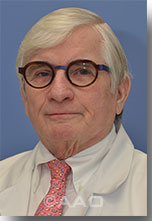 MAJOR GIFT TO THE MUSEUM OF VISION. The Academy received a major gift in support of the Museum of Vision. The $25,000 donation from Norman B. Medow, MD, FACS, will establish a permanent exhibit on the second floor of the Academy’s San Francisco headquarters in 2015. “The preservation of history is a requirement for the understanding and analysis of how we arrived at where we are and in leading us in the direction of where we will be going,” said Dr. Medow, who has served as the museum’s chair since 1993. MAJOR GIFT TO THE MUSEUM OF VISION. The Academy received a major gift in support of the Museum of Vision. The $25,000 donation from Norman B. Medow, MD, FACS, will establish a permanent exhibit on the second floor of the Academy’s San Francisco headquarters in 2015. “The preservation of history is a requirement for the understanding and analysis of how we arrived at where we are and in leading us in the direction of where we will be going,” said Dr. Medow, who has served as the museum’s chair since 1993.
To donate, visit www.faao.org/donate. |
Improve Your Practice’s Financial Performance
This spring, the Academy and its practice management division, the American Academy of Ophthalmic Executives (AAOE), are offering two ways to check how practices stack up against others—a financial benchmarking survey and a salary survey.
Financial benchmarking survey. AcadeMetrics: Ophthalmic Financial Benchmarking, which opened April 15 and runs through May 31, helps members improve efficiency and manage increased patient volume. It collects data about practices to analyze clinic collections, patient encounters, provider productivity, clinic efficiency, staffing levels and costs, and accounts receivable. This new survey is more streamlined than past versions, featuring easier data entry and fewer, better-targeted metrics. Using these results, participants can compare their performance with national and regional averages.
Salary survey. AcadeMetrics: Ophthalmic Salary Survey helps Academy and AAOE members benchmark the compensation and benefits packages of their medical practices, optical shops, and surgery centers in order to make fair, competitive, and appropriate decisions. This survey, conducted in affiliation with the Outpatient Ophthalmic Surgery Society and BSM Consulting, opened April 15 and does not have an end date.
Access. To access these reporting and comparison tools, Academy and AAOE members must participate in the free surveys.
For more information and to take the surveys, visit www.aao.org/academetrics. Also see Practice Perfect.
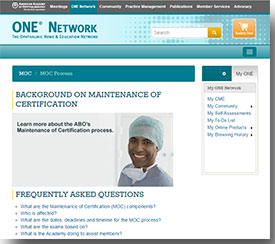 ONE SPOTLIGHT: Maintenance of Certification 101. Visit the Academy’s MOC Essentials for resources and helpful information related to maintenance of certification (MOC). MOC Essentials has everything from an outline of MOC requirements to various Academy-developed study tools to fit your learning style. You’ll also find information on the Practicing Ophthalmologists Curriculum, online registration for the 2014 MOC Exam Review Course, links to the American Board of Ophthalmology website, and a glossary of MOC acronyms. ONE SPOTLIGHT: Maintenance of Certification 101. Visit the Academy’s MOC Essentials for resources and helpful information related to maintenance of certification (MOC). MOC Essentials has everything from an outline of MOC requirements to various Academy-developed study tools to fit your learning style. You’ll also find information on the Practicing Ophthalmologists Curriculum, online registration for the 2014 MOC Exam Review Course, links to the American Board of Ophthalmology website, and a glossary of MOC acronyms.
To learn more, visit www.aao.org/mocstudyresources. |
Take Notice
PQRS Reporting via EHR: June 1 Deadline
Use the Intelligent Research in Sight (IRIS) Registry to streamline your reporting for the Physician Quality Reporting System (PQRS).
If you have an EHR. By integrating your EHR with the Academy’s clinical registry, you’ll have an easy way to report PQRS, provided you meet three deadlines:
- By June 1, submit signed IRIS Registry agreements.
- By Aug. 1, your EHR system must be mapped to the IRIS Registry. For tips on doing this, see "Integrate the IRIS Registry With Your EHR" (Practice Perfect, April).
- By Sept. 1, submit your signed consent form, allowing your information to be sent to CMS.
The IRIS Registry will require access to data gathered by your EHR system in the current reporting period. Please note: As with the meaningful use program, your EHR must be certified as a 2014 Certified EHR Technology by an Authorized Testing and Certification body.
If you don’t have an EHR. You can report via a qualified PQRS registry. At time of press, CMS hadn’t announced its list of qualified PQRS registries for 2014. The announcement is expected this month or next, and the Academy is confident that the list will include the IRIS Registry. Depending on which non-EHR reporting option you choose, the deadline for submitting signed IRIS Registry agreements is either Aug. 1 or Oct. 31.
Who can participate in IRIS. U.S.-based Academy members.
What it costs. The Academy is initially offering multiyear, fee-free access to those who sign agreements and meet the data submission requirements in 2014.
How to get started. Send an e-mail to irisregistry@aao.org.
For more information on submitting PQRS, visit www.aao.org/pqrs and www.aao.org/irisregistry.
Free Webinar: Medicare’s Value-Based Payment Modifier
Medicare’s Physician Value-Based Payment Modifier Program mandates that any practice with more than 10 eligible professionals (including optometrists) that does not report on the Physician Quality Reporting System in 2014 could face an additional 2 percent penalty on its Medicare-allowed payments in 2016.
View the free, recorded webinar titled “The Value-Based Payment Modifier—Why PQRS Is Even More Important and What You Need to Know in 2014 and Beyond” to learn how this new program could affect your bottom line and what you can do to protect your payments.
Visit www.aao.org/aaoewebinars.
New Resource: Eye Disease Statistics Web Page
Developed by the University of Illinois at Chicago, the Academy’s new U.S. Eye Disease Statistics Web page presents an overview of the number of people with visual impairment and blindness in the United States, detailing both the causes and shifting demographic forecasts of visual impairment and blindness.
Designed as a one-stop information source, the page currently focuses on a greater understanding of glaucoma prevalence patterns. This information is critical for research and public health policy planning as the number of people with vision problems is increasing due to an overall aging population. An online calculator tailors visual impairment/blindness and glaucoma forecasts for your community. Other disease statistics, including international data, will be added in the future.
To view, visit www.aao.org/one/eye-disease-statistics.
Academy Store
Missed Meaningful Use Webinars? Order Recordings
If you missed the two webinars on meaningful use held in March and April, you can still benefit from the information by ordering the recordings to watch at your convenience. “Attesting to Meaningful Use Stage 2 in 2014” explains how practices can take advantage of the financial incentive for meaningful use (MU) of certified EHR technology and how they can avoid penalties. “Meaningful Use Stage 2: Patient Engagement and Patient Portals” explains the role that patient portals play in MU and discusses which MU measures are required and which are optional for attestation.
For more information, visit www.aao.org/aaoewebinars.
Members at Large
People
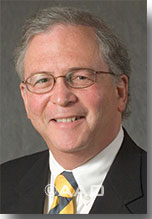 |
| Dr. Abbott. |
On April 2, Bruce E. Spivey, MD, President of the International Council of Ophthalmology (ICO), presented Richard L. Abbott, MD, with the 2014 International Duke Elder medal during the opening ceremony of the World Ophthalmology Congress of the ICO in Tokyo. The Duke Elder medal is awarded every four years to the ophthalmologist who has contributed most to the development of international relations and friendship between ophthalmologists and who has advanced the field by contributions in writing and organization in ophthalmology. Dr. Abbott will deliver the Duke Elder oration on May 21 at the Royal College of Ophthalmologists Annual Congress.
Passages
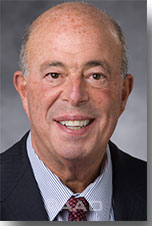 |
| Dr. Epstein. |
David L. Epstein, MD, died on March 4. He was 69.
Dr. Epstein was the Joseph A.C. Wadsworth clinical professor of ophthalmology at Duke University School of Medicine and served as chair of the department of ophthalmology for the last 22 years. A distinguished clinician-scientist, Dr. Epstein authored more than 230 scholarly papers and consulted in glaucoma clinical care while maintaining an active glaucoma research program. He received many awards for his work, including the 2013 Mildred Weisenfeld Award for Excellence in Ophthalmology from the Association for Research in Vision and Ophthalmology (ARVO) and the 2012 Duke University School of Medicine Medical Alumni Association’s Distinguished Faculty Award. Dr. Epstein served as president of ARVO in 1992, president of the Chandler-Grant Glaucoma Society in 2004, and president of the Association of University Professors of Ophthalmology in 2011.
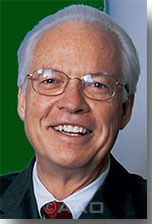 |
| Dr. Smith. |
Academy past president Ronald E. Smith, MD, died March 17. He was 71.
A distinguished clinician-scientist and professor, Dr. Smith’s particular research interests included eye infections and inflammation, corneal transplant surgery, and managing complex anterior segment and corneal diseases referred to the University of Southern California (USC) Doheny Eye Institute. He began his tenure there in 1975, and ultimately advanced to professor and chairman of the department of ophthalmology at the USC Keck School of Medicine, director of the Doheny Cornea Service, and medical director of the Doheny Eye and Tissue Transplant Bank. He was president of the Castroviejo Cornea Society, president of the American Uveitis Society, vice president of the Association for Vision and Research in Ophthalmology, secretary for the Academy’s Global Alliances, and chairman of the American Board of Ophthalmology, among other leadership roles within the field. Dr. Smith coauthored more than 290 scientific publications, three texts, and numerous abstracts and scientific posters.
“Ron’s gifts to ophthalmology extended far beyond the Academy, and he has received more honors than seems possible—but he deserved even more. For those of us who were privileged to know him, we will remember his sense of self-deprecating humor, quick laugh, kindness, and desire and success in befriending and mentoring young people. Ron was always guided by an impeccable sense of integrity and personal honor. He was and will always be one of the best of the best,” said Academy Executive Vice President and CEO David W. Parke II, MD.
Dr. Smith graduated from Johns Hopkins University School of Medicine in 1967. After completing residency at the Wilmer Eye Institute at Johns Hopkins, he completed a fellowship in uveitis, cornea, and external disease at the Francis I. Proctor Foundation for Research in Ophthalmology, University of California Medical Center at San Francisco. He returned to Wilmer as chief resident, followed by two years in the U.S. Public Health Service as an ophthalmologist for the Alaska Native Medical Center in Anchorage.
 |
|
SOE EuLDP. Dr. Brennan (back row, third from left), Wolfgang Nairz (to the right of Dr. Brennan), and Dr. Bechrakis (front row, far right) in Innsbruck, Austria.
|
Leadership Development Program in Europe
The Academy’s international envoy, Michael W. Brennan, MD, met with the 2013-2015 European Society of Ophthalmology Leadership Development Programme group (SOE EuLDP) during its Feb. 26-28 session in Innsbruck, Austria. The session was led by EuLDP director Nikolaos Bechrakis, MD, and Siegfried Walch of the MCI Management Center Innsbruck.
Dr. Brennan discussed professionalism issues with EuLDP participants while Philip Gass, PhD, Chief Executive of the German Ophthalmological Society (DOG), provided insights into organizational structure, including the complementary roles of physician and executive staff leadership (using the DOG as an example). EuLDP participants also had the opportunity to hear a talk titled “Challenging Your Limits” by Wolfgang Nairz, leader of the Austrian Mount Everest Expedition in 1978—the first ascent to Everest without supplemental oxygen.
This EuLDP class will be in Chicago as part of AAO 2014, in conjunction with the SOE. They will also meet in January 2015 with the Academy’s LDP XVII, Class of 2015, and the Pan-American Association of Ophthalmology’s 2014-2015 Curso de Liderazgo participants.
D.C. Report
Bipartisan Solution to SGR Problem
The Academy continues to lobby Congress to finalize legislation permanently repealing the faulty sustainable growth rate (SGR) formula used to calculate Medicare physician pay. Bipartisan, bicameral legislation was introduced in Congress earlier this year to reform Medicare reimbursement, including permanent repeal of the formula. But lawmakers were stymied in passing final legislation because they were unable to agree on funding sources to cover the cost of the reforms.
While unable to pass a permanent solution, lawmakers did pass a temporary, one-year fix to halt a 24 percent cut resulting from the SGR formula that was to hit April 1. The Academy, the American College of Surgeons, and the American Medical Association continue to reiterate to lawmakers that temporary remedies are fiscally irresponsible. Physicians have faced the recurring threat of significant cuts caused by the SGR formula for nearly a decade, with Congress providing a series of patches costing over $160 billion.
The Academy supports swift agreement and action on pending legislation, pointing out that this is the closest Congress has ever come to repealing the SGR formula. While it doesn’t resolve all concerns, the legislation includes key Academy priorities that were absent in earlier bills, including positive updates for physicians for five years. Other factors leading to the Academy’s support include the following:
- Preservation of the Medicare fee-for-service program. A new Merit-Based Incentive Payment System would allow physicians to remain in the fee-for-service program. This benchmarking system incorporates the three existing quality reporting programs (PQRS, the EHR Incentive Program, and the Value-Based Payment Modifier Program).
- Future relief from current law’s penalties. Penalties under the current Medicare Value-Based Payment Modifier System are estimated at 8 to 10 percent by 2018. Under the new Merit-Based Incentive Payment System, penalties would start in 2018, and would initially be capped at 4 percent before gradually increasing to 9 percent by 2020. Phased-in penalties for those who do not participate in any of the quality activities would be capped at 9 percent in 2020. Note: Penalties in place under the existing quality improvement programs would remain through 2017.
- Implementation of specialty-directed performance measurement. Physicians would be assessed on measures related to their practice. Specialty organizations like the Academy would help develop measures.
While lobbying to urge lawmakers to pass the pending legislation, the Academy and other physician associations will pursue further reforms. The Academy continues to oppose targeted savings associated with the CMS’ misvalued-code initiative that were included in the short-term patch. The Academy asserts that such artificial savings targets will threaten access to care for key procedures in 2015 and beyond.